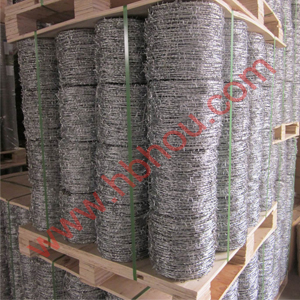I n southwest Houston, neighbors living in Gulfton's sprawling apartment complexes come from all over the world — El Salvador, Mexico, Afghanistan. In this dense and diverse urban space, many residents are beautifying their neighborhood, caring for potted plants, fruits, vegetables and herbs, including some plants that they first learned to cultivate back home. Walking past these porch plant gardens, a passerby can spot a papaya tree by a front door, admire roses sprouting tall above metal porch railing or smell Cuban oregano waiting to be plucked. The plants being cultivated on patios often link residents from Latin American countries to the customs and culture of their homelands.
MAKING GULFTON GREEN: With only one park, Gulfton residents work to bring more green space to their dense urban community Ground Screw U Series

The Houston Chronicle spoke with five residents about the plants they grow and why having a garden matters to them. All of the following interviews were in Spanish.
Plants: Rose, gardenia, berry, pequin pepper, pothos Hometown: La Union, El Salvador
When Felicita Gómez moved into her ground-floor Gulfton apartment complex six months ago, she specifically chose a place that would allow her to bring her porch plants with her from her previous apartment. “How am I going to leave my plants behind?” she said. In her coastal city in El Salvador, Gómez said, her mother would grow lime and guava trees. “Sometimes when we were hungry and there wasn’t any food to eat we would climb the tree or knock down guavas with a stick and we would fill our stomachs with that,” she said, noting that the place she grew up was quite poor. Gómez, who works at a butcher shop in Houston, said she doesn't rely on her garden for sustenance anymore though she still has some edible plants growing on her first-floor porch.
Felicita Gomez, 53, touches the leaves of one of her pepper plants outside her Gulfton apartment on Thursday, Dec. 1, 2022 in Houston.
She points to a nearby flower called “flor de izote” that isn’t part of her garden with roses and gardenias and chiles, but is part of the apartment complex's common green area. It’s a white flower common in El Salvador. “That (flower) you rinse under warm water and then eat with egg,” she said. “It’s it’s tasty little snack for us, Salvadorans,” she said, hoping that she’ll be able to cook some up when it’s ready. Pequin pepper: This pepper plant ("chile piquín" in Spanish) can adapt to sun and shade and grows spicy, red, pointed peppers that birds love to eat.
Plants: Aloe vera, rosemary, pequin pepper, epazote, hope, mint, lemongrass, rue Hometown: Dolores Hidalgo, Mexico
Every morning, Juana Guerrero steps out on the front porch of her apartment and checks in with her many potted plants, which include mint, lemongrass and rosemary. “I talk with my plants,” Guerrero said in Spanish, “How did you wake up this morning? How are you all? What did you do? How did it go last night?” Guerrero, who grew up on a ranch in rural Mexico, said she treats her plants like children and grandchildren. And like children, she doesn’t have a favorite. “My dad would always say you love your grandchildren more than your children. And it’s true. But to me, my plants are like my beautiful grandchildren. I love all of them,” she said, “I don’t have one that’s my favorite.” Along with her plants, Guerrero – who is retired — lives with and cares for her daughter and granddaughter, whom she is teaching how to take care of her snake plants – also called “lengua de suegra” or “mother-in-law’s tongue.” Taking care of plants is something Guerrero picked up from her mother and grandmother, back in Mexico who would tell her to gather fresh herbs, like mint or yerbabuena, from their garden to make tea.
Guerrero said she doesn’t just check in with her plants – sometimes she has to give them a pep talk when they aren’t growing well. “If I see one that’s sad, I nag at them,” she said. She’ll tell them, “Why are you sad if I love you?” Espazote: This herb is used in Mexican and Central American cooking and is native to the region. With a complex flavor, it’s sometimes called skunk weed. Esperanza: This ornamental plant can be found growing in the wild in Texas. It has tubular, yellow flowers. A Mexican beer is made from its roots.
'A NEW ERA': Construction begins on $23.5 million Community Center in Gulfton
Plants: Snake plant, rue, aloe vera, spiderwart, mulberry tree Hometown: Usulután, El Salvador
Antonio Gonzalez's porch plants are enclosed behind a small fence in a potted garden he cares for with his wife. While raising two kids, working in construction and being active in his church, Gonzalez has maintained the garden, occasionally buying new plants at the flea market. Originally from Central America, Gonzalez remembered growing “veranera” or bougainvillea and roses back home. “In El Salvador, the climate is warm, tropical,” he said. “Here it’s harder (to grow roses) because we planted roses in the ground, but there was concrete," he said, lamenting the paved part of his patio that made it harder to garden. In Houston, he’s also had to adjust to the slightly colder climate – some of his plants died in the winter freeze of 2021. But his garden has grown back in time. “I always like to have plants," he said, "Some are medicinal, others are ornamental.”
From his garden, he said the "ruda" or rue can be useful for headaches. He recommends rubbing the leaves on the forehead for relief. The aloe vera he uses as a topical treatment for burns. Other plants serve an aesthetic purpose, adding vibrance to the apartment complex where kids goof off and run around nearby after school. Rue: This shrubby herb is native to the Balkan Peninsula. People have historically used its bitter leaves for herbal medicine, though it can be harmful.
This is a carousel. Use Next and Previous buttons to navigate
An egg carton with seed for peas sits on the porch of Luz Perez's Gulfton on Wednesday, Nov. 30, 2022 in Houston.
A guava tree on the patio of Olga Carmen Gutierrez's Gulfton apartment on Wednesday, Nov. 30, 2022 in Houston.
A papaya tree fruits in the yard of a Gulfton apartment complex on Wednesday, Nov. 30, 2022 in Houston.
Luz Perez touches her mother-of-millions plant on the porch of her Gulfton apartment on Wednesday, Nov. 30, 2022 in Houston.
Plants: Guava tree, lime tree, oregano, rue, aloe vera, papaya tree, banana tree Hometown: San Miguel, El Salvador
In her enclosed first-floor garden Olga Carmen Gutierrez steps out of her apartment to hang up Christmas lights among the potted plants and parakeets chirping in a cage. Many plants adorning her patio are fruit trees – guava, papaya, banana – along with a bare lime tree that was recently picked by Gutierrez’ mother so she could prepare some fresh lime juice. “I really like fruit,” Gutierrez said, “anything natural is much better for us.”
A guava tree on the patio of Olga Carmen Gutierrez's Gulfton apartment on Wednesday, Nov. 30, 2022 in Houston.
A papaya tree fruits in the yard of a Gulfton apartment complex on Wednesday, Nov. 30, 2022 in Houston.
Many of the plants the domestic worker has sewn came directly from seeds she's patiently tended to over the years. When they grow large enough, she’ll pass them over to a friend who owns some land, so they can plant them in the ground and have room to grow. Guava trees are grown all over the world but are native to tropical parts of the Americas. People grow them for the guava fruit, which can be eaten raw or made into jellies.
GREEN THUMBS: How do community gardens work? A look at some of Houston's grow-your-own gardens
Plants: Tomato, basil, chiles, cilantro, rue, kalanchoe, sunflower Hometown: Mexico City, Mexico
Back in Mexico City, Luz Perez learned about plants from her mother’s patio garden. Her mom had a guava tree, gardenias and roses on her porch. Now, on her own balcony in southwest Houston, Perez tends to her garden of herbs, chiles and tomatoes. She sometimes channels her mother. “She always would speak a lot to her plants,” Perez said, like when her roses didn’t bloom, she would promise them that she wouldn’t cut them so they would grow. “Now I do the same thing,” Perez said. She shares a porch with her neighbor, who tends to a garden of her own. They share watering duties when one of them is out of town.
Luz Perez touches her mother-of-millions plant on the porch of her Gulfton apartment on Wednesday, Nov. 30, 2022 in Houston.
One of Perez's plants, kalanchoe, she said, has positive health effects so she boils it into a tea or blends into a smoothie. “Kalanchoe is good to help against cancer,” she said. Multiple scientific studies published in the National Library of Medicine have demonstrated that Kalanchoe extract can slow tumor growth. Kalanchoe: Many of this group of plants come from Madagascar and tropical Africa. They are popular succulents that require lots of light. Plant data sources: Britannica, Central Texas Gardener, Texas A&M and eater.com
Elizabeth Trovall is an immigration reporter for the Houston Chronicle.

Double Horizontal Wire Fence Emily Foxhall covers the environment for the Houston Chronicle. She joined the paper in 2015 as a suburban reporter. She has documented the city's sprawl while playing a key role in the paper's breaking news and enterprise coverage. Her reconstruction of the Santa Fe High School shooting, along with two other colleagues, won first place for feature writing from the Texas Associated Press Managing Editors. She was part of the Chronicle team that was named a finalist for the Pulitzer Prize for breaking news in 2017 for coverage of Hurricane Harvey. Soon after, she began roaming the state as the Texas Storyteller.